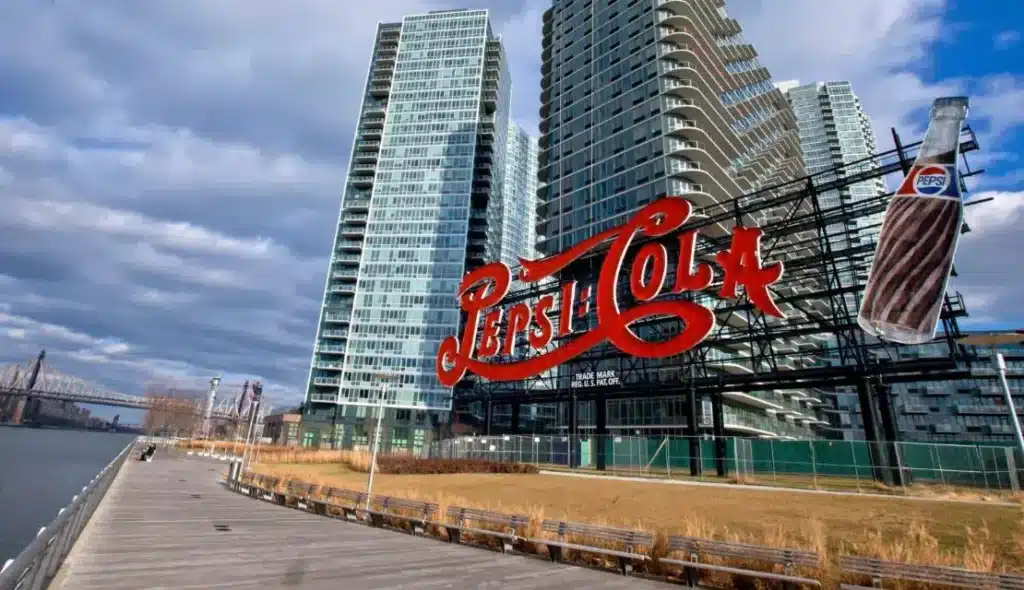The Pepsi Cola sign in Queens, NY, erected in 1936, not only serves as a beacon over the East River but also as a testament to the evolution of advertising and the resilience of iconic landmarks. Its preservation amidst the rapid development of Long Island City sparks a complex dialogue about the roles of heritage and modernity in urban spaces. As the skyline around it transforms, the sign remains an enduring symbol of a bygone industrial era and raises questions about what preservation in a capitalist society truly entails. One wonders, as new generations gaze upon its familiar glow, what future significance this emblem will hold in the ever-changing tapestry of New York City.
Origins and Evolution
The iconic Pepsi Cola sign in Queens, NY, originally erected in 1936, symbolizes the evolution of American advertising and cultural heritage over decades.
This emblematic structure was first installed atop PepsiCo’s bottling plant, signifying a robust era of industrial growth and consumer culture.
As Pepsi expanded, the sign’s luminous red, white, and blue colors stood as a beacon of American enterprise, its neon contours reflecting the optimism of mid-20th century America.
Over time, despite numerous relocations and the plant’s eventual closure, the sign has remained a prominent fixture.
Its survival and continued maintenance represent a nostalgic nod to the past, while continuously adapting to the contemporary landscape, thus maintaining its relevance and emotional connection with the community.
Cultural Impact and Legacy
Beyond its historical significance, the Pepsi Cola sign in Queens has profoundly influenced local identity and the broader cultural fabric of New York City. Erected as a beacon of American enterprise, this luminous icon resonates with a sense of shared heritage and communal pride.
It stands not just as an advertisement but as a symbol of resilience and continuity amidst the evolving urban landscape. Locals and visitors alike view it as a landmark that embodies the spirit of Queens, fostering a deep sense of belonging and connection. Its enduring presence over the iconic East River reflects the timeless allure of New York City’s industrial past, while continuously inspiring contemporary culture, community gatherings, and artistic representations.
Read More:
Family Fun and Scenic Views at Hunter’s Point South Park, Queens, NY
Strike Up Fun at The Gutter Bar LIC: Bowling and Brews in Queens, NY

